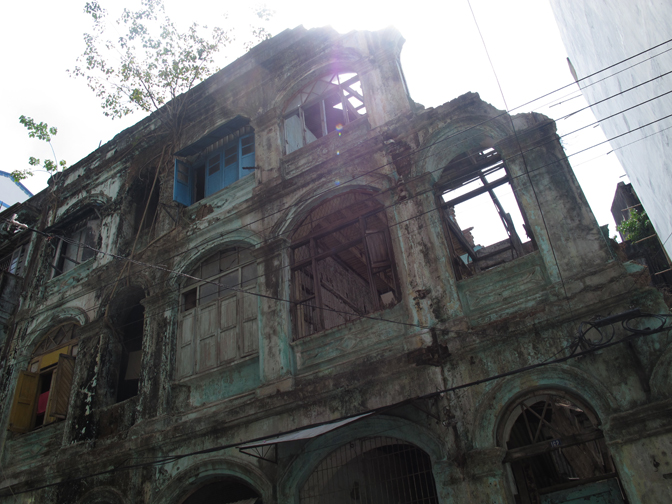The US-based World Monument Fund (WMF) this week recognised Rangoon as a heritage zone for its dazzling religious and colonial architecture, but warned that an influx of foreign investment risks devastating its historical landmarks.
Placing Burma’s commercial capital on its 2014 watch list, the WMF described Rangoon as a “cultural melting pot” blending dozens of temples, mosques, and the country’s only Jewish synagogue with unrivalled colonial heritage sites.
But it cautioned that buildings were being torn down at “an alarming rate” and replaced with “poorly designed structures” that neglected their historical value.
“Following the country’s emergence from isolation under military dictatorship and new foreign investment opportunities, a rush of development now imperils Yangon’s [Rangoon’s] unique urban landscape,” said the WMF in a statement on Tuesday.
“Modernising the city while protecting and promoting its tangible and intangible heritage represents a key challenge.”
The group identified around 90 historical buildings in seven inner city townships to be included on the watch list. Shwe Yinn Mar Oo, senior communication officer at the Yangon Heritage Trust said being recognised by the WMF will make Rangoon better known to the world.
“This will bring awareness to the world – that there is cultural heritage in this city that needs preservation and can be used to boost business opportunities,” Shwe Yinn Mar Oo told DVB on Wednesday.
According to the Trust, there are currently 189 historical buildings in Rangoon and 89 of them are in seven inner city townships: Botahtaung, Pazundaung, Latha, Panbedan, Lanmadaw, Kyauktada and Seikkan.
Well-known heritage buildings in Rangoon include the [former] Interior Ministers’ Office, the HighCourtBuilding and RangoonCity Hall. Last year, lawyers led protests against government plans to tear down dozens of historical buildings to make way for mass constructions of high-rise hotels, apartments and offices.
[related]
Famed writer and advocate of historical preservation, Chit Oo Nyo, told DVB that the media needs to educate the public about Rangoon’s cultural heritage.
“These buildings we walk past every day – such as the Interior Ministers’ building – have very significant historical backgrounds. The Interior Ministers’ building, which is the site where general Aung San and his cabinet was assassinated, has huge cultural value and the media and archaeological experts should help the public understand this better,” said Chit Oo Nyo, adding that the government should not privatise them in order to reap profits.
According to WMF, Rangoon has the largest collection of late-nineteenth-century and early twentieth-century colonial architecture in Southeast Asia. But the city’s cultural heritage fell into disrepair over nearly fifty years of military rule and economic mismanagement, which saw tourism and foreign investment plummet.
Since embarking on a series of democratic reforms in 2011, the quasi-civilian regime led by Thein Sein has prioritised swift and often shoddy property development to meet the growing demand of foreign investors. WMF insists that conservation must be integrated into the city’s development strategy.
“Heritage conservation can serve as a vital component in economic, environmental, and social policy,” said their statement. “Inclusion on the Watch seeks to promote a thoughtful and well balanced integration of cultural resources and new development as part of Yangon’s public policy.”



